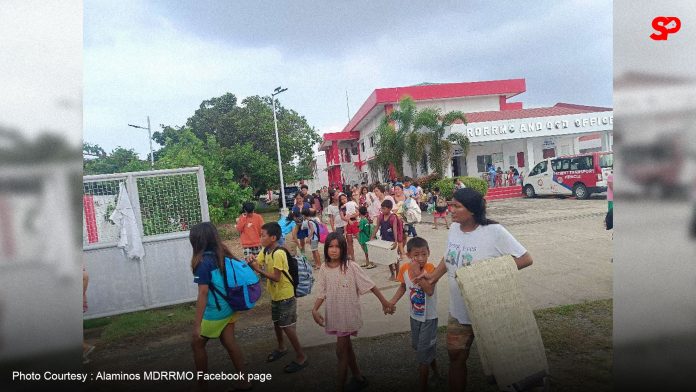By Michelle Ducut
After Typhoon Pepito (international name Man-yi) struck the province over the weekend, 1,037 families, equivalent to 3,336 individuals, remain in evacuation centers as of Monday afternoon.
According to Assistant Director Pia Flores of the Pangasinan Provincial Disaster Risk Reduction and Management Office (PDRRMO), the evacuees, primarily from coastal and low-lying areas, were relocated as a precaution against storm surges and flooding. Other residents from Dasol, Infanta, and Laoac have already returned home.
Thankfully, no casualties have been reported. However, the typhoon caused structural damage, with two houses completely destroyed in San Fabian and Laoac towns, and landslides blocking sections of the Villaverde Trail in San Nicolas. Clearing operations by local and national agencies are ongoing, although some areas remain impassable.
Flooding has affected several areas, including Dagupan City, Bugallon, and San Jacinto. Rising river levels have added to the challenges, with the Sinocalan River in Sta. Barbara at a critical level and the Marusay and Bued Rivers above normal levels. Despite these conditions, rivers such as Balincaguing in Mabini and Agno in Bugallon remain below normal levels.
By mid-morning, the San Roque Dam ceased water discharge operations, with its water level recorded at 279.20 meters above sea level.
Governor Ramon Guico III expressed gratitude to residents who cooperated with the preemptive evacuation orders, as well as to the frontliners ensuring the evacuees’ safety and welfare.
“We were battered by Pepito, but we thank God it weakened before hitting the province. Our priority now is to care for our displaced residents, providing them with food and ensuring their comfort,” Guico said.
Pangasinan’s coastal towns were among the most affected, with preemptive evacuations implemented to mitigate risks from storm surges and flooding. Authorities continue to monitor conditions while aiding recovery efforts.

